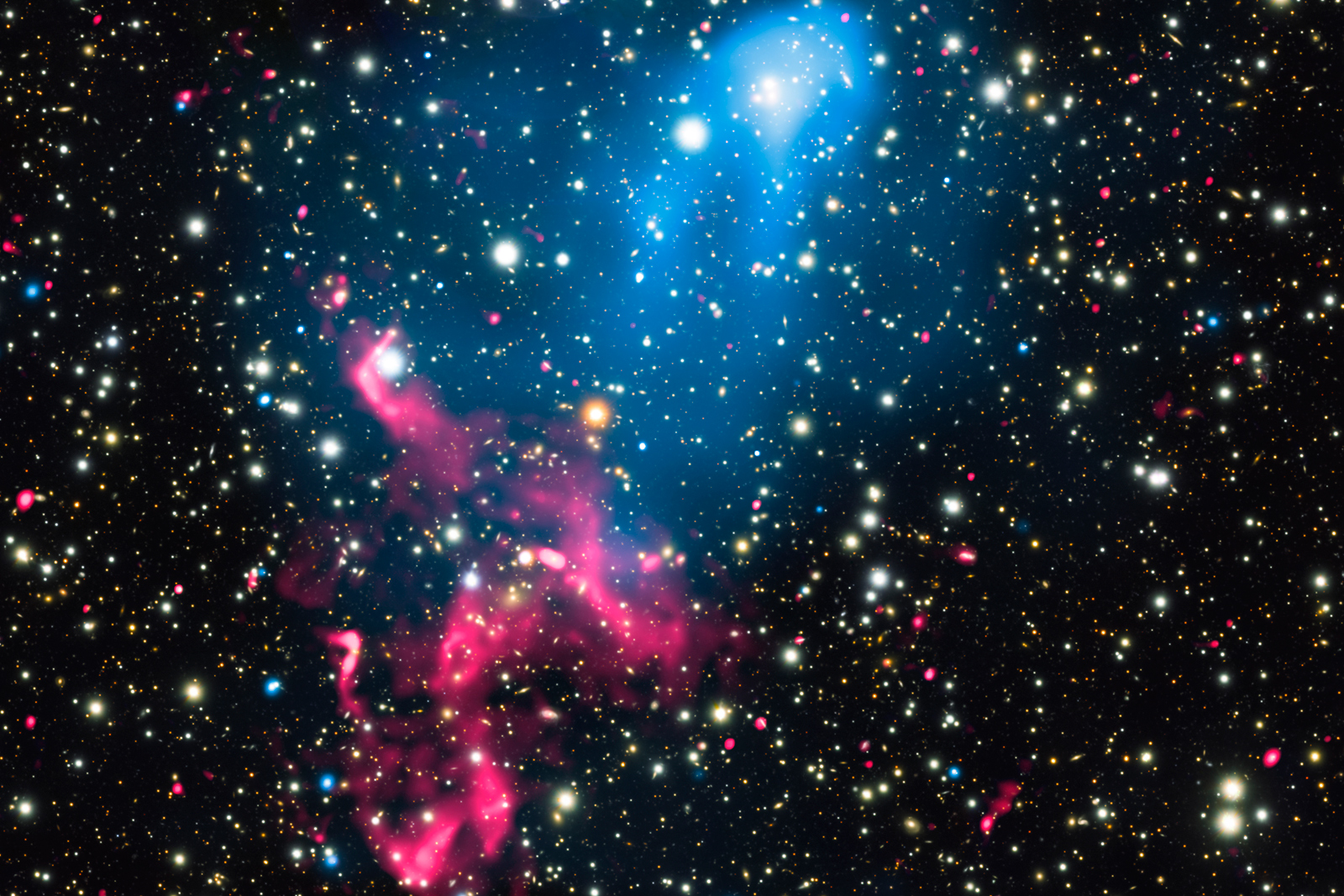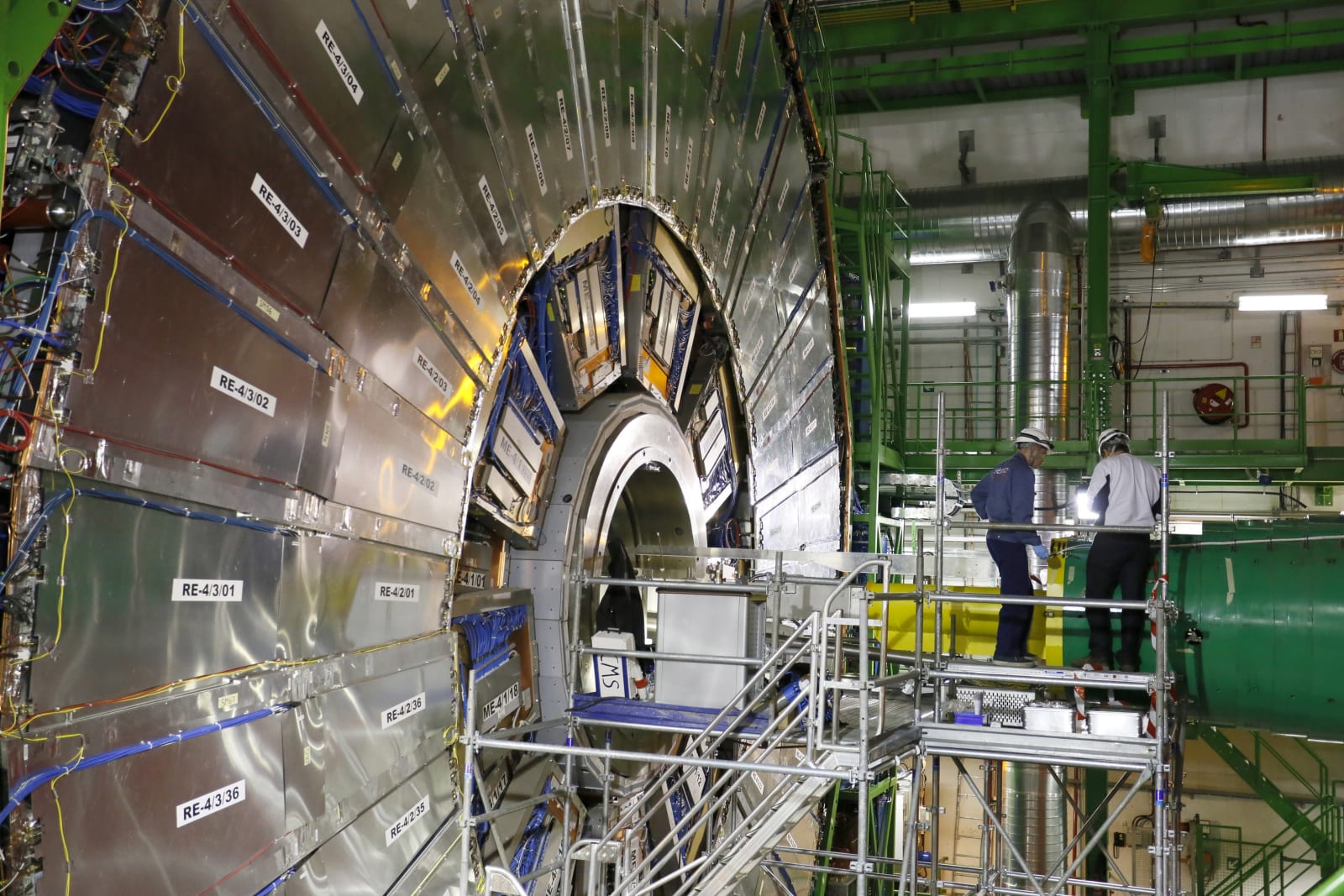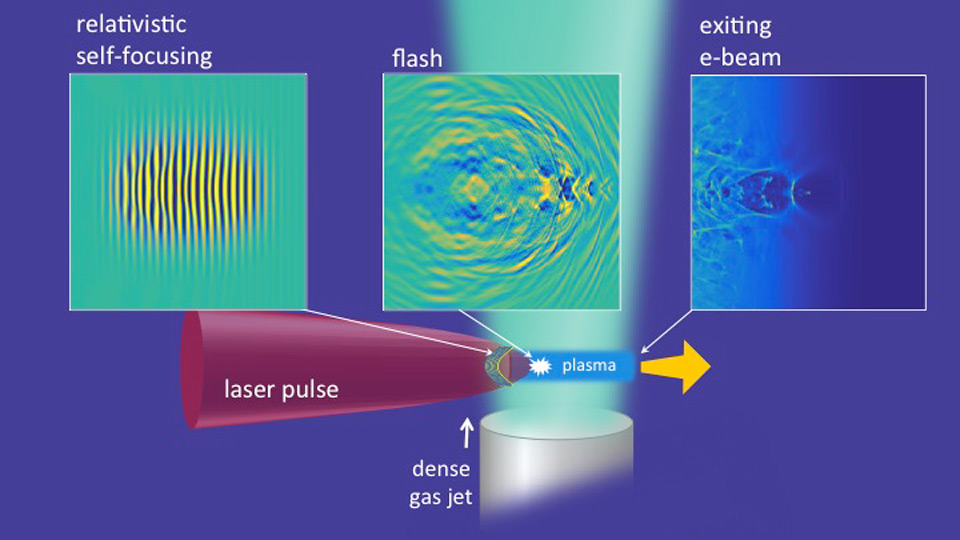
Particle accelerators range in size from massive to compact, but researchers from Stanford University and the SLAC National Accelerator Laboratory have created one that's downright miniscule. What you see above is a specially patterned glass chip that's smaller than a grain of rice, but unlike a broken Coke bottle, it's capable of accelerating electrons at a rate that's roughly 10 times greater than the SLAC linear accelerator. Taken to its full potential, researchers envision the ability to match the accelerating power of the 2-mile long SLAC linear accelerator with a system that spans just 100 feet.
For a rough understanding of how this chip works, imagine electrons that are brought up to near-light speed and then concentrated into a tiny channel within the glass chip that measures just a half-micron tall. From there, infrared laser light interacts with patterned, nanoscale ridges within the channel to create an electrical field that boosts the energy of the electrons.
In the initial demonstration, researchers were able to create an energy increase of 300 million electronvolts per meter, but their ultimate goal is to more than triple that. Curiously enough, these numbers aren't even that crazy. For example, researchers at the University of Texas at Austin were able to accelerate electrons to 2 billion electronvolts over an inch with a technique known as laser-plasma acceleration, which involves firing a laser into a puff of gas. Even if Stanford's chip-based approach doesn't carry the same shock and awe, it seems the researchers are banking on its ability to scale over greater distances. Now if we can just talk them into strapping those lasers onto a few sharks, we'll really be in business.
Filed under: Science
Comments
 The Large Hadron Collider (LHC) is getting an upgrade that will let researchers collect approximately 10 times more data than they can now. Currently, the particle accelerator can produce up to one billion proton-proton collisions, but that number wi...
The Large Hadron Collider (LHC) is getting an upgrade that will let researchers collect approximately 10 times more data than they can now. Currently, the particle accelerator can produce up to one billion proton-proton collisions, but that number wi...
 The Large Hadron Collider (LHC) is getting an upgrade that will let researchers collect approximately 10 times more data than they can now. Currently, the particle accelerator can produce up to one billion proton-proton collisions, but that number wi...
The Large Hadron Collider (LHC) is getting an upgrade that will let researchers collect approximately 10 times more data than they can now. Currently, the particle accelerator can produce up to one billion proton-proton collisions, but that number wi...
 Particle accelerators have proven vital to understanding subatomic physics, but current technology tends to make them... rather large. And Stanford is determined to address that. SLAC has started assembling a new location, FACET-II (Facility for Adva...
Particle accelerators have proven vital to understanding subatomic physics, but current technology tends to make them... rather large. And Stanford is determined to address that. SLAC has started assembling a new location, FACET-II (Facility for Adva...
 Suddenly, even the Large Hadron Collider seems downright quaint. Researchers have found a combination of cosmic phenomena that's creating the universe's largest known particle accelerator. At least one supermassive black hole in a galaxy cluster ha...
Suddenly, even the Large Hadron Collider seems downright quaint. Researchers have found a combination of cosmic phenomena that's creating the universe's largest known particle accelerator. At least one supermassive black hole in a galaxy cluster ha...
 Sorry, folks: CERN didn't mean to get your hopes up. Researchers have determined that Large Hadron Collider data suggesting a possible new particle was really just a "statistical fluctuation." Additional data collected over the course of the past s...
Sorry, folks: CERN didn't mean to get your hopes up. Researchers have determined that Large Hadron Collider data suggesting a possible new particle was really just a "statistical fluctuation." Additional data collected over the course of the past s...
 The rejuvenated Large Hadron Collider might have achieved another breakthrough... provided everything lines up, that is. Two teams of CERN scientists have detected an excess of gamma ray pairs that they suspect might represent the radioactive decay...
The rejuvenated Large Hadron Collider might have achieved another breakthrough... provided everything lines up, that is. Two teams of CERN scientists have detected an excess of gamma ray pairs that they suspect might represent the radioactive decay...
 Modern particle accelerators are big, to put it mildly -- even the smallest ones tend to occupy large rooms. Researchers at the University of Maryland, however, have found a way to shrink them down to where they're genuinely portable. By shooting p...
Modern particle accelerators are big, to put it mildly -- even the smallest ones tend to occupy large rooms. Researchers at the University of Maryland, however, have found a way to shrink them down to where they're genuinely portable. By shooting p...
 The Large Hadron Collider recently got back to work after a two-year layoff for maintenance and upgrades, but soon it will go under the knife again. Last week 230 scientists met at CERN in Switzerland to discuss the High-Luminosity LHC (HL-LHC) pro...
The Large Hadron Collider recently got back to work after a two-year layoff for maintenance and upgrades, but soon it will go under the knife again. Last week 230 scientists met at CERN in Switzerland to discuss the High-Luminosity LHC (HL-LHC) pro...

